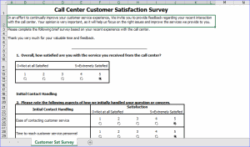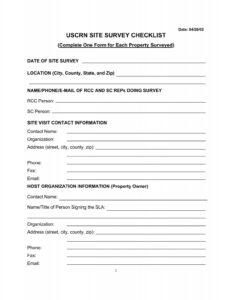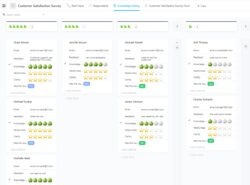Understanding your customers is not just a good idea; it’s the lifeblood of any successful business. Truly listening to what they have to say, their needs, their frustrations, and their desires, is the most direct path to improving your products, services, and overall customer experience. This active listening is often encapsulated in what we call Voice of the Customer, or VOC, and it’s a powerful strategy that puts your customers at the very center of your operations.
One of the most effective and structured ways to capture this invaluable customer insight is through well-designed surveys. But crafting the perfect survey can feel daunting, right? That’s where a ready-made voice of the customer survey template comes in handy, providing a solid framework that ensures you ask the right questions to get the most meaningful answers, saving you time and ensuring consistency in your data collection.
The Anatomy of an Effective Voice of the Customer Survey
Building a compelling VOC survey isn’t just about throwing questions together; it’s about thoughtful design that encourages honest, detailed feedback. You want to create an environment where customers feel comfortable sharing their true thoughts, knowing their input is valued and will lead to positive changes. A great survey acts as a bridge between your business and your customer’s experience, highlighting areas of strength and opportunities for growth that you might otherwise overlook. Think about what specific insights you need to make informed decisions.
Before you even start writing questions, consider the specific goals of your survey. Are you trying to understand satisfaction with a new product, identify pain points in your service process, or gauge overall brand loyalty? Having a clear objective will guide your question selection and ensure that every piece of data you collect serves a purpose. This focused approach helps you avoid survey fatigue for your respondents and ensures the data you gather is actionable and relevant to your business objectives.
Essential Question Categories for Your VOC Survey
To ensure a comprehensive understanding of your customers, your voice of the customer survey template should ideally cover several key areas. These categories help you paint a holistic picture of their experience, moving beyond just simple satisfaction scores to uncover deeper insights into their journey with your brand.
- Demographic Information: Basic details like age, location, or industry, which help segment your audience and understand how different groups perceive your brand.
- Overall Satisfaction: Questions gauging general happiness with your product, service, or brand.
- Product/Service Specific Feedback: Detailed questions about features, usability, performance, or specific aspects of your service delivery.
- Customer Effort Score (CES): Questions that measure how easy it was for customers to complete a task or resolve an issue.
- Net Promoter Score (NPS): A single question asking how likely customers are to recommend your business, providing insight into loyalty and advocacy.
- Open-ended Feedback: Crucial questions that allow customers to elaborate on their experiences, express opinions freely, and provide suggestions in their own words.
Once you have your categories, the phrasing of your questions is paramount. Use clear, concise language that is easy to understand and avoids jargon. Steer clear of leading questions that might bias responses. For instance, instead of asking "Don’t you agree our new feature is amazing?", try "How would you rate the usability of our new feature?". Always offer a mix of question types, from multiple-choice and rating scales to open-ended text boxes, to capture both quantitative and qualitative data effectively.
Crafting Your Voice of the Customer Survey Template for Maximum Impact
Moving beyond the core questions, the user experience of your survey itself plays a huge role in completion rates and data quality. A well-structured voice of the customer survey template is intuitive, visually appealing, and respects the respondent’s time. Think about the flow of questions; group related questions together and avoid jumping erratically between different topics. A logical progression helps respondents stay engaged and provides more coherent feedback.
Consider the length of your survey. While you want comprehensive data, overly long surveys can lead to respondent fatigue and abandonment. Aim for a balance, prioritizing the most important questions. If you have a lot to ask, consider breaking it down into smaller, more focused surveys or using conditional logic to show only relevant questions based on previous answers. Providing an estimate of the time required to complete the survey at the beginning can also set expectations and improve completion rates.
Leveraging different types of surveys for specific goals can also enhance the impact of your voice of the customer survey template. For instance, transactional surveys sent immediately after a specific interaction (like a purchase or support call) capture in-the-moment feedback about that particular experience. Relationship surveys, on the other hand, offer a broader view of overall customer loyalty and satisfaction over time, often conducted quarterly or bi-annually. Each type serves a distinct purpose in your VOC strategy.
Finally, remember that collecting feedback is only the first step. The true power of a voice of the customer survey template lies in the analysis and subsequent action. Regularly review the responses, identify trends, and pinpoint areas for improvement. Share insights across your organization and prioritize changes based on what your customers are telling you. This continuous feedback loop ensures that customer voices are not just heard, but acted upon, leading to tangible improvements and stronger customer relationships.
In the end, cultivating a customer-centric approach through effective feedback mechanisms is a continuous journey, not a one-time destination. By systematically gathering and analyzing customer insights, businesses can proactively adapt to evolving needs, refine their offerings, and foster deeper connections. This commitment to listening transforms raw data into a powerful engine for innovation and sustained growth, ensuring your business remains relevant and truly resonates with those you serve.



